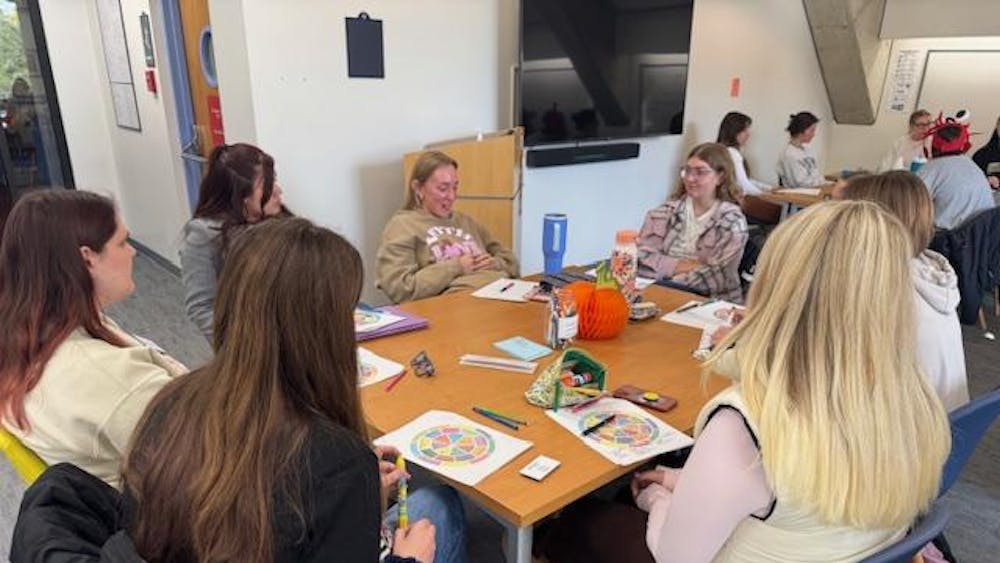The Notre Dame department of Film, Television and Theatre hosted professor of cinema studies Dana Polan of New York University on Tuesday night for a talk on singer and actor Frank Sinatra, whom Polan called an American entertainment icon, particularly after World War II.
The talk, titled “Ring-a-ding-ding: Performance Styles in the Movies and Music of Frank Sinatra,” took place at the Browning Cinema in the DeBartolo Performing Arts Center and was followed by a screening of the 1955 Sinatra film “Young at Heart.” The department of American Studies and the Gender Studies and Teaching Beyond the Classroom programs also sponsored the event.
The visit by Polan overlapped with “Sinatra,” a class Film, Television and Theatre professor Pam Wojcik is teaching this semester.
Polan discussed the “voyeuristic” nature of film throughout his lecture, touching on the saying, “You’re watching something that’s for you, but is pretending you’re not really there.”
Few stars did this better than Sinatra, Polan said.
Polan used multiple clips of the star exhibiting what he called a “confrontational” style, where a confident Sinatra establishes a bond with an audience that “avowed how he seemed to be singing personally to each audience member,” Polan said.
However, Polan said this manner of “force strutting and swagger,” which appeared in Sinatra’s more energetic swing tunes, was only one side of the Sinatra coin. Polan also touched on the other side; he noted that, while Sinatra’s ballads addressed the singer himself, the performance still existed for the purpose of the audience.
In addition to his ability to cross emotions in his performance, both Polan and Wojcik said they studied Sinatra for his ability to cross media.
While known primarily as a singer, Sinatra’s acting career earned praises from critics and audiences alike. Appearing alongside the method actors of the 1950s, the untrained Sinatra channeled his abilities to become what Wojcik called a “method singer” to portray his complex characters.
“There’s a virtuosic performance of vulnerability,” Wojcik said in an interview. “He’s broken in so many ways that I think are surprising if you just think of him as a singer.”
Despite his vulnerability, Sinatra existed as an icon of masculinity in 1950s American culture, Polan said.
“The person who would want to be Elvis is an Elvis impersonator, whereas the person who wants to be Sinatra is every American in the postwar period,” Polan said.
For Polan, who is authoring a book on the legendary Sinatra album “Songs for Swingin’ Lovers” with Sinatra scholar Chuck Granata, Sinatra’s performance resonates even today from his ability to captivate an audience while making it appear natural at the same time.
“Part of his power is that it doesn’t seem studied, it doesn’t seem mannered, it seems like who he is, even if it is a performance,” Polan said.
NYU professor leads talk on persona of Frank Sinatra
Jack Lyons | The Observer
Dana Polan, a New York University professor, uses scenes from Frank SInatra's films to facilitate a discussion on his persona before a screening of the 1955 film “Young at Heart” on Tuesday.









